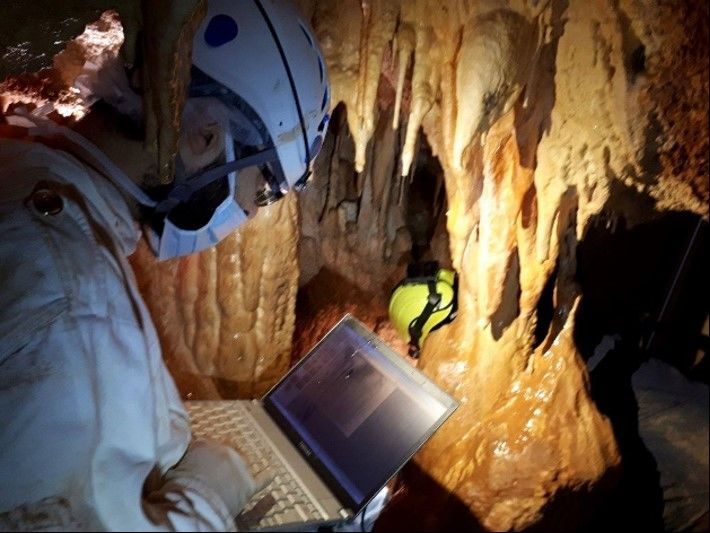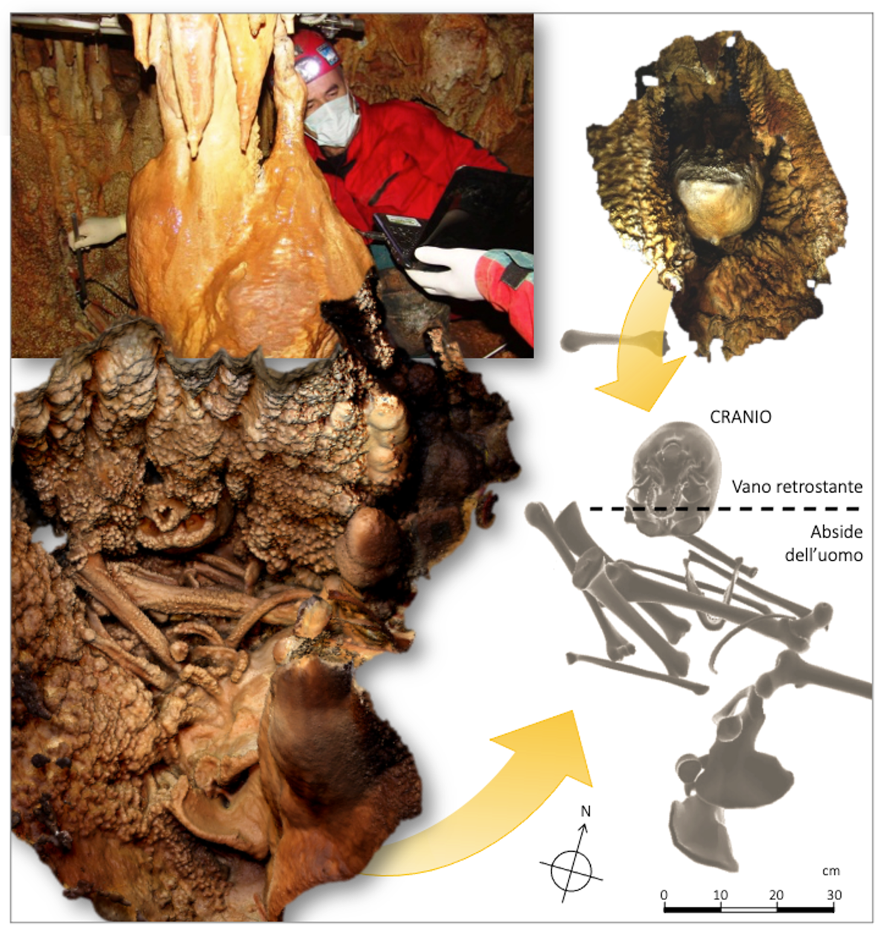
Strange to be a Neanderthal
Back in 1993, the almost complete skeleton of a Neanderthal was discovered in Apulia, southern Italy, in one of the first explorations of a karstic system, then identified by speleologists in the Alta Murgia. It is an exceptional palaeoanthropological find due to the completeness of its remains, dating back some 150,000 years and still lying in an almost inaccessible small chamber within the cave of Lamalunga (near Altamura, Bari), trapped between laminar and corralloid limestone concretions.
Now, thanks to a project (PRIN, 2017-2020) coordinated by Sapienza University of Rome and the application of virtual palaeoanthropology techniques, a detailed study of the morphology of this Neanderthal cranium has been completed. The research, published in the Nature group's journal Communications Biology, involved researchers from Sapienza University of Rome, such as Giorgio Manzi and Mary Anne Tafuri, or researchers who were at the same university when the research was carried out, such as Antonio Profico (University of Pisa), Costantino Buzi (IPHES in Tarragona, Spain) and Fabio Di Vincenzo (University of Florence).
The skull and the entire Altamura skeleton are inside a small chamber at the north-western end of the karstic system called the Abside dell'uomo. Most of the skeletal elements collapsed here after the individual's death and soft tissue's decomposition. The researchers digitally acquired the two exposed parts of the skull separately: the front half directly with laser sensors, as it was visible from the Abside dell'uomo, while the other half required the combined use of photogrammetry, as it was only accessible with telescopic probes through openings in the curtain of columns beyond the skeleton. The two parts were then reassembled and computer-analysed, following a comparative evaluation based on several comparison samples, using the one that was found to be most similar (the Cranium 5 from Atapuerca-SH) as a reference.
The descriptive and quantitative study of the cranium reveals how the morphology of this important find fits into the Neanderthal variability. However, it shows some less typical, i.e. more archaic traits than other European fossils dated between 300 and 40 thousand years ago. Some of these features have never been observed in Homo neanderthalensis, suggesting that their origin may date back to long phases of the geographical isolation of human populations in the ecological refuges represented by the southern regions of the Italian peninsula.
Antonio Profico, the first name in the article, states, 'The parts digitised in the cave have no points of junction, so it was necessary to develop a new method to recompose them. So, we decided to virtually combine the two halves as if they were disjointed portions of a cranium, using reference samples on which to base the best match'.
Giorgio Manzi, the research coordinator, says, 'In light of our data, we believe that the Altamura skull may shed light on the debate on Neanderthal evolution. The shape of the Altamura man's skull falls within the variability of this extinct species, sharing features with specimens commonly linked to the so-called classic Neanderthals, but at the same time showing affinities with ancient Neanderthals - such as those from Saccopastore, here in Rome - or with even more archaic finds, such as the skull from Ceprano (southern Lazio), which dates back some 400,000 years."
Costantino Buzi adds, 'The Altamura man represents a unique example: he is a potentially complete Neanderthal (we know of no others as representative). The skeleton is disarticulated and covered with layers of calcite, the formation of which has favoured the exceptional preservation of even the most fragile skeletal structures, such as those inside the nasal opening'.
Fabio Di Vincenzo concludes, "The close similarity found with earlier finds along the Neanderthal evolutionary line - such as the Cranium 5 from Atapuerca-SH, dating back 430 thousand years ago - is quite unexpected. We observed this similarity in the expression of various discrete cranial features, as well as in the overall morphology of the occipital bone, the anatomy of which can be accurately assessed on Altamura."
References:
Profico, A., Buzi, C., Di Vincenzo, F., Boggioni, M., Borsato, A., Boschian, G., Marchi, D., Micheli, M., Moggi Cecchi, J., Samadelli, M., Tafuri, M.A., Arsuaga, J.L., Manzi, G. (2023). Virtual excavation and analysis of the early Neanderthal cranium from Altamura (Italy). Commun. Biol. 6, 316: 1-8. DOI: 10.1038/s42003-023-04644-1
Further Information
Giorgio Manzi
Department of Environmental Biology
giorgio.manzi@uniroma1.it



